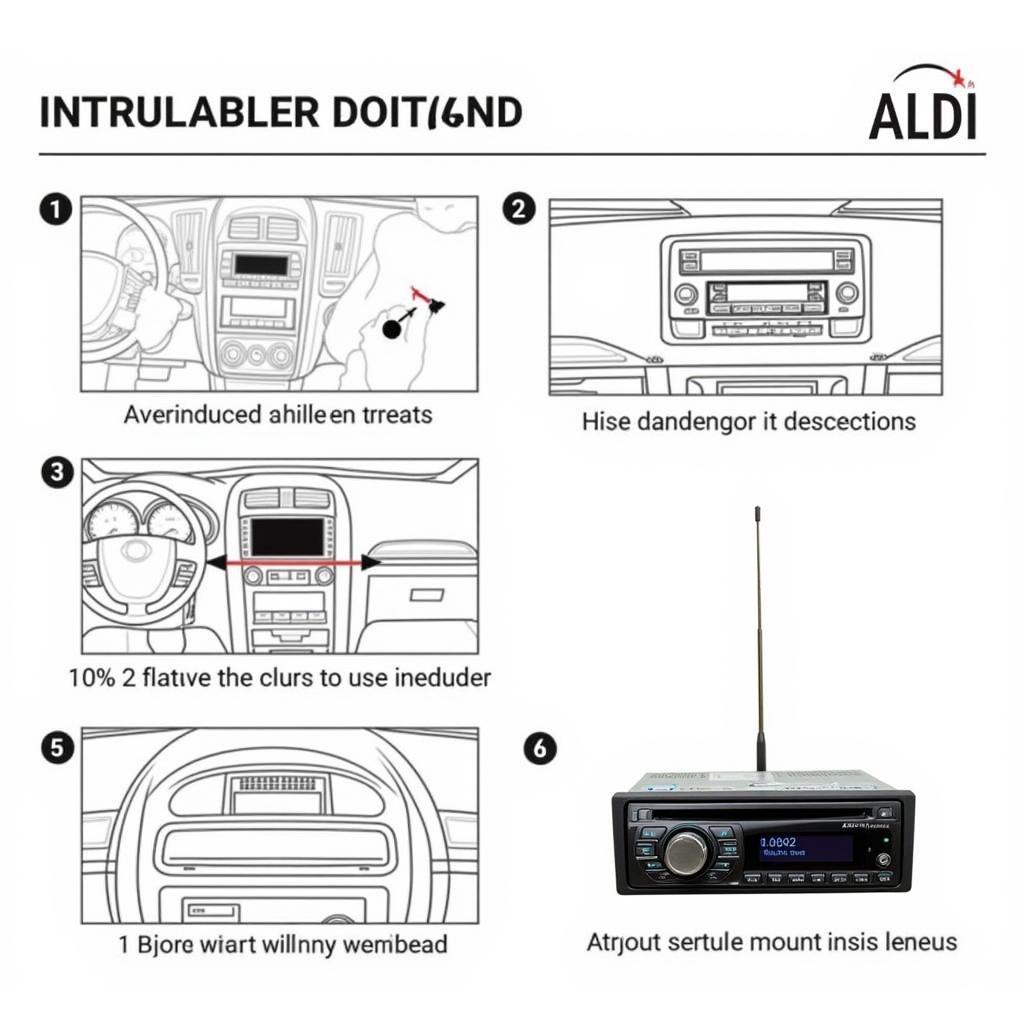The brake warning light on your Suzuki Alto dashboard is a crucial safety feature designed to alert you to potential issues with your braking system. Ignoring this warning could jeopardize your safety and that of other drivers on the road. This article delves into the common causes behind a Suzuki Alto brake warning light and provides potential solutions to help you address this issue effectively.
Common Reasons Your Suzuki Alto Brake Warning Light is On
There are several reasons why your Suzuki Alto brake warning light might illuminate. Some of the most common causes include:
- Low Brake Fluid Level: The most frequent culprit behind a glowing brake warning light is a low brake fluid level. Brake fluid is essential for transmitting force from the brake pedal to the wheels, ensuring effective braking. A leak in the system or worn brake pads can lead to a drop in brake fluid level.
- Worn Brake Pads: Brake pads are designed to wear down over time. When they reach a certain level of wear, a sensor within the brake pad triggers the warning light, signaling the need for replacement.
- Faulty Brake Light Switch: The brake light switch, positioned near the brake pedal, activates your brake lights when you apply the brakes. A malfunctioning switch can prevent the lights from illuminating and trigger the warning light on your dashboard.
- ABS Issue: Modern Suzuki Altos are equipped with an Anti-lock Braking System (ABS). The ABS warning light is often distinct from the regular brake warning light. However, if the ABS system experiences a fault, it can also illuminate the main brake warning light.
Diagnosing the Problem
Begin by checking your Suzuki Alto’s brake fluid level. The brake fluid reservoir is usually located near the firewall on the driver’s side of the engine bay. The reservoir will have minimum and maximum level markings.
-
If the fluid level is low: Carefully top it up with the correct brake fluid type recommended in your Suzuki Alto owner’s manual. However, simply adding brake fluid will not resolve the issue if a leak is present. You’ll need to inspect the brake lines, calipers, and wheel cylinders for any signs of leakage.
-
If the brake fluid level is adequate: And you haven’t recently replaced your brake pads, it’s advisable to have a professional mechanic inspect the braking system.
What to do When the Suzuki Alto Brake Warning Light Comes on While Driving
If the brake warning light illuminates while driving, it’s crucial to exercise caution and take immediate action.
- Safely Move to the Side of the Road: Gradually reduce speed and pull over to a safe location away from traffic.
- Turn on Your Hazard Lights: Alert other drivers that you’ve pulled over due to a potential vehicle issue.
- Assess the Situation: Check your brake fluid level. If it’s low, do not attempt to drive further. Call for roadside assistance.
- Contact a Mechanic: If the brake fluid level is adequate, and you suspect an issue beyond low fluid or worn pads (such as a brake line leak or a faulty brake light switch), it’s best to err on the side of caution and contact a qualified mechanic for diagnosis and repair.
Preventative Measures for a Healthy Braking System
Regular maintenance is key to preventing brake system issues and ensuring optimal safety. Here are some preventative measures:
- Regular Brake Fluid Checks and Changes: Consult your Suzuki Alto owner’s manual for recommended brake fluid check and replacement intervals.
- Timely Brake Pad Replacements: Don’t ignore the brake warning light when it signals worn brake pads. Timely replacements prevent further damage and maintain braking efficiency.
- Routine Brake Inspections: Incorporate a thorough brake inspection into your Suzuki Alto’s regular maintenance schedule. A mechanic can identify potential issues early on.
Conclusion
Addressing a Suzuki Alto brake warning light promptly is paramount for your safety on the road. Understanding the common causes behind this warning and taking appropriate action can help you avoid potentially dangerous situations. Remember, a well-maintained braking system is essential for your peace of mind and the safety of everyone on the road.


